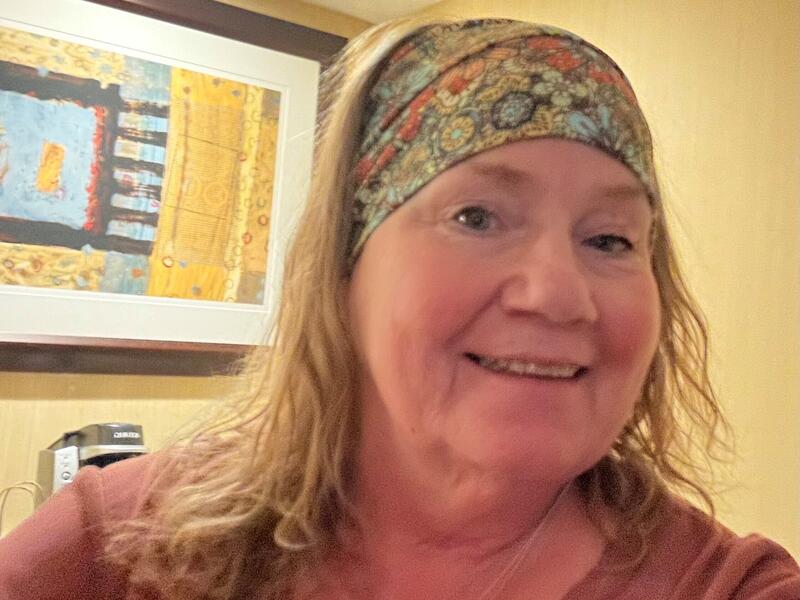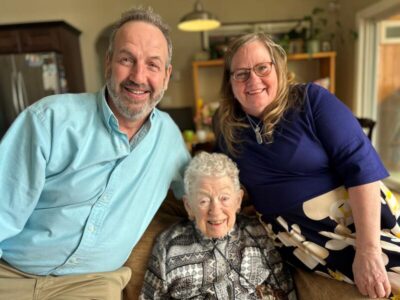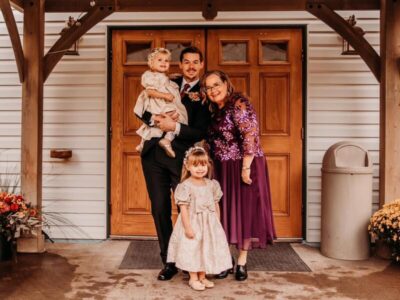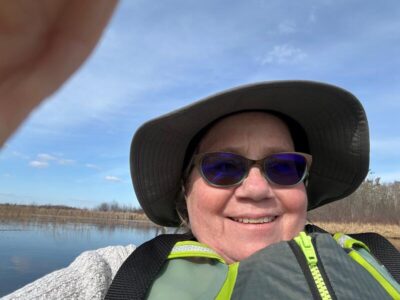Melissa Hanchon ran into some classmates at an all-school reunion recently, and early in the conversation they asked her why she didn’t have a drink in her hand.
Then she told them she would get a drink – a diet Coke – because she didn’t drink alcohol anymore. On a daily basis, she has learned that sobriety comes with challenges. Some involve telling friends you used to drink with that you have made some changes in your life.
“They were like, ‘Are you OK?’” Hanchon recalled. “I said, ‘I’m recovering from alcohol – I gave it up. I don’t drink anymore.’ They were scratching their heads trying to figure out why I gave it up and I told them that, for me, it was the best decision ever.”
Hanchon left booze behind about three years ago. Three arrests involving alcohol and automobiles had something to do with that. Disruptions in family life were part of it, too. In this case, she didn’t recognize where rock-bottom was until she got there.
“I wanted my adult children back in my life,” she said. “I wanted to be able to develop friendships that weren’t friendships I made at a bar. I guess there was a lot that I didn’t realize that I wanted until after I needed it.”
Realizing she needed help
After her third DWI, Hanchon had the option to sign up for DWI Court, an 18-month judicially supervised treatment program available for some alcohol-related arrests in the Bemidji area.
To start with, it was enticing because it didn’t involve spending time in jail. More importantly, it included rigid drug and alcohol testing, regular communication with a probation officer and mandatory drug and alcohol counseling.
After deciding DWI Court was the best option, she was required to attend a minimum of three group meetings a week. She kept a book at the meetings that had to be signed by the lead instructor, which she would then need to show to her probation officer. The probation officer would then report to the judge on whether she was attending the meetings.
“During the 18 months, I filled two books full of signed off meetings and many notes from those groups,” Hanchon said. “I have saved my books as a reminder of the work that I accomplished during the 18 months of growth discipline and work that I had put into myself and DWI court.”
Sanford makes huge impression
Her resolve to make her life better included a lot of help from Sanford Health’s addiction counseling programs. For her, it began with a meeting with Amanda Rohloff, a specialist in addiction counseling who works at Sanford Health Behavioral Health Bemidji.
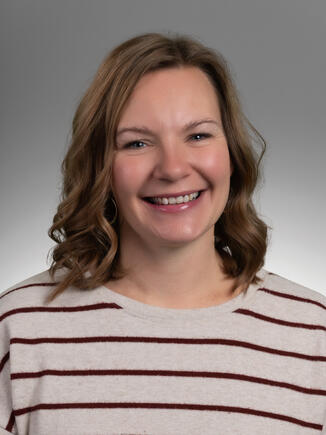
Photo by Sanford Health
That led to conversations with Charly VanGrinsven, a Sanford Health mental health therapist who works with patients struggling with addiction.
Both had regular appointments with Hanchon and aligned her with group sessions that enabled her to take an active role in maintaining her sobriety – while also helping others maintain theirs.
Rohloff and VanGrinsven made huge initial impressions and continue to be a presence in Hanchon’s ongoing recovery, which still involves regular visits to group sessions.
“If I made a list of how Charly and Amanda have helped me, there would be 100 things on it,” Hanchon said. “They have given me so much of their time. Their suggestions and what they’ve taught me have helped me so much.”
Hanchon reached a point where she knew it was time to get alcohol out of her life, and she would make any sacrifice to accomplish that. That initial willingness has served her well since then.
“Melissa’s will to be sober is huge,” Rohloff said. “It has been that way since Day 1. She knew if she ever picked up a drink again, she would die. She knew if she went back to it, she wouldn’t stop.”
Seeing sobriety as a ‘new best friend’
Involving the Sanford addiction counseling’s team was not a required part of the DWI Court program, but it was a necessary one for her. The collaborative approach – Hanchon would have access to addiction counseling and also be able to address her mental health concerns – proved to be a vital element in improving her situation.
It was not just about drinking too much. There were reasons behind the booze. For that, she began working with VanGrinsven.
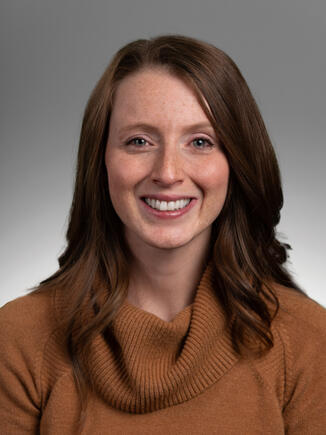
Photo by Sanford Health
“A really big part of our program is that we work side by side,” VanGrinsven said. “Addiction and mental health go hand in hand. With Melissa, she was obviously ready to get help, but I don’t think she really knew how to go about it. In the early stages Amanda and I just showed her kindness – this was a safe place for her to be. We also emphasized that she should be kind and patient with herself.”
In Hanchon’s initial conversations with Rohloff, she began to get a more complete understanding of the extent to which alcohol had taken over her life. It was the first of several important steps initiated by her sessions with Sanford providers.
“Amanda got me to realize alcohol was my best friend and she told me in six months I’d have a new best friend – sobriety,” Hanchon said. “I struggled with it because it was something I didn’t think I was going to be able to manage.”
Addictions like Hanchon’s are not unusual. According to the National Institute on Alcohol Abuse and Alcoholism, an estimated 29.3 million adults in the United States had alcohol use disorder in 2022. This included 16.8 million males and 12.5 million females.
Addressing chemical addictions begins with understanding what a patient is up against.
“Let’s say you have a craving for chocolate,” Rohloff said. “You can’t get it out of your head. It’s ‘I want chocolate. I need chocolate. Oh my gosh, chocolate would be so good right now.’ It is an all-consuming thought that takes over your brain. When you get it, it’s like an ‘ahhh’ experience, but then that feeling runs out and you want more and more.”
Naming the problem
The initial challenge can seem overwhelming. Addressing that “What’s the use?” part of achieving sobriety is a difficult but not insurmountable hurdle.
“It can seem really hopeless and daunting,” VanGrinsven said. “When someone has made the decision to get clean and sober, there is often fear because this process involves discomfort. How do you actively choose to be uncomfortable when this drug has served as a huge source of comfort or avoidance or numbness for so long? How can you deal with being asked to lean into all the discomfort that can come with giving it up?”
As VanGrinsven explained to Hanchon, sometimes it helps when you give a name to the part of your brain that creates a hunger for alcohol. Identify it as an enemy and treat it like one.
It made sense to Hanchon, who began calling that part of her brain “Sally the Sailor.” She then talked about this strategy during a group session: “I said if Sally is coming around the corner, I’m going to deck her because I can’t have Sally in my life anymore.”
Helping Hanchon manage her demons in this way was an example of meeting clients where they are. It is part of Sanford’s addiction counseling program to do it this way with every client.
Finding a team for backup
This compassionate, team-based approach emphasizes building rapport, establishing trust and creating a positive environment. Rather than expecting clients to share everything immediately, the staff focuses on patience, empathy and letting individuals open up at their own pace.
“A lot of times when people come in, they’re very nervous and they’re very anxious and they’re like, ‘Oh my gosh, I have to pour everything out to you right now.’ And that’s really not the approach that we take,” Rohloff said.
“We do a lot of rapport building. When a person is getting ready to leave my office, I always give them my card with my phone numbers on it and I tell them we are here for you. You have a team behind you now. Reach out if you need anything. Don’t hesitate.”
Addiction treatment is personalized with a path that accommodates age, overall health and severity of dependency. There are opportunities to be part of group sessions that cater to men or women, as well as those that align with personal circumstances. Online appointments and group therapy opportunities are also available.
“Our management leadership is really trying to design a program that can meet all the needs of a person who is going through a very difficult process,” VanGrinsven said. “We have clients here who tell us it feels like a family – I think that’s because we use a team approach. There is no gatekeeping here. If one of us is working with a patient, we’re all working with this patient. It’s a very important piece of what we do.”
Ultimately, counselors want to prepare clients like Hanchon to be able to greet the tough moments with resilience. She has family support on that, now, too. There were rough patches with her oldest son that are no longer there.
“Amanda and Charly have helped me make a toolbox,” Hanchon said. “I use all those tools when I need them.”
It starts with wanting to begin the recovery process. From there, it’s a collaboration. Hanchon remains an enthusiastic and consistent part of Sanford’s addiction counseling group sessions available in the Bemidji area. She keeps coming back, and in a sense, she keeps giving back.
Recovery is not “all sunshine and rainbows” as Rohloff phrased it, but there is a better life out there. Hanchon’s ongoing recovery provides plenty of evidence.
“It has been exciting for us to see Melissa’s recovery,” VanGrinsven said. “It’s a beautiful story and we both feel honored to be a part of it. She always gives us all the credit and we’re like, ‘Melissa, you put in the work. We just helped you along the way.’”
Seeking help from Sanford
If you think you may need assistance in addressing problems with drugs or alcohol, you can start a conversation with your primary care provider or contact Sanford Health licensed alcohol and drug counselors.
They can guide you from addiction to recovery in a supportive environment with a treatment plan tailored to you.
Learn More
- Podcast: Addiction recovery digs into causes, healthier responses
- Why substance abuse can worsen mental health
- Podcast: Sober curiosity can inspire better relationship with alcohol
…
Posted In Bemidji, Chemical Dependency, Healthy Living
